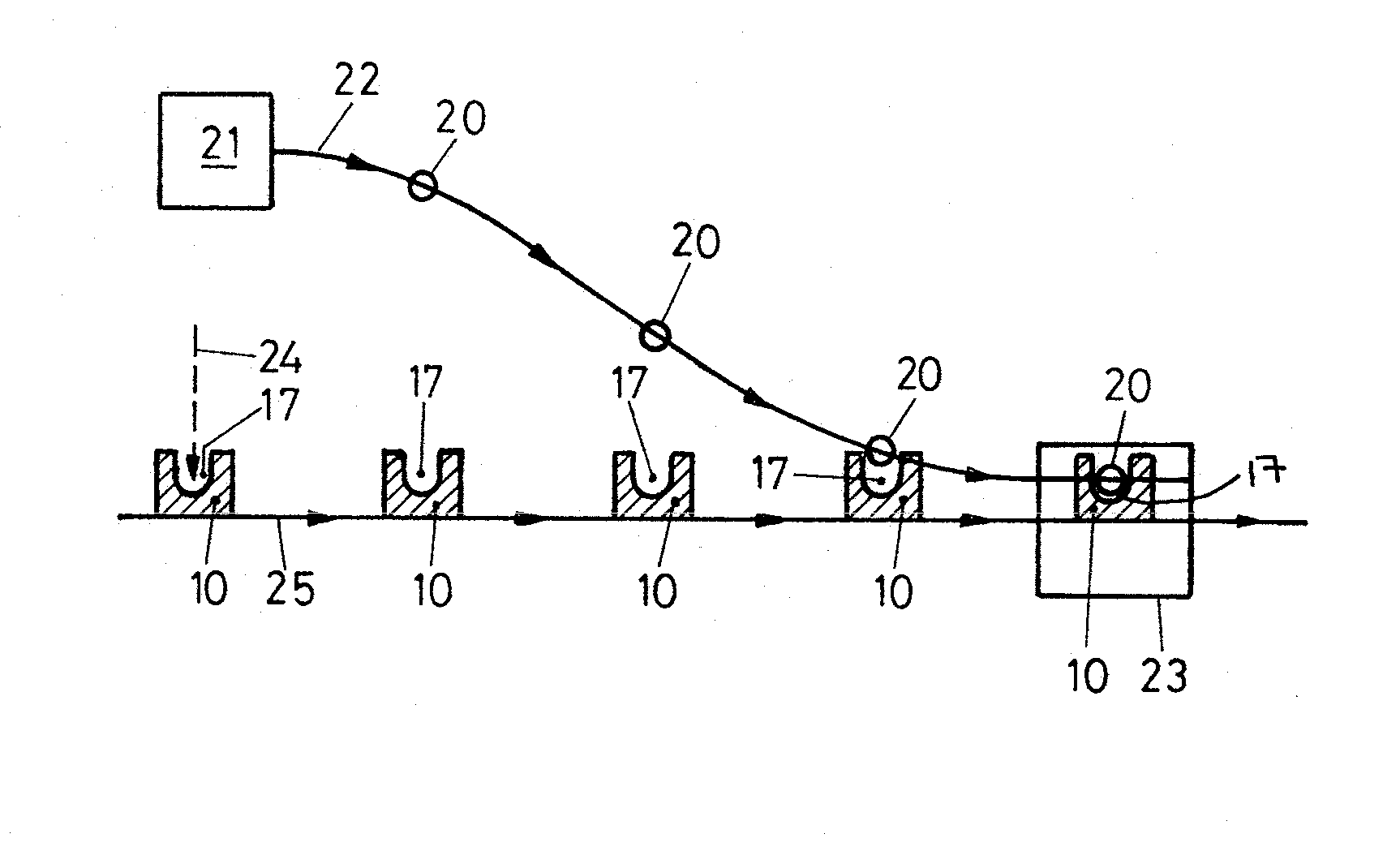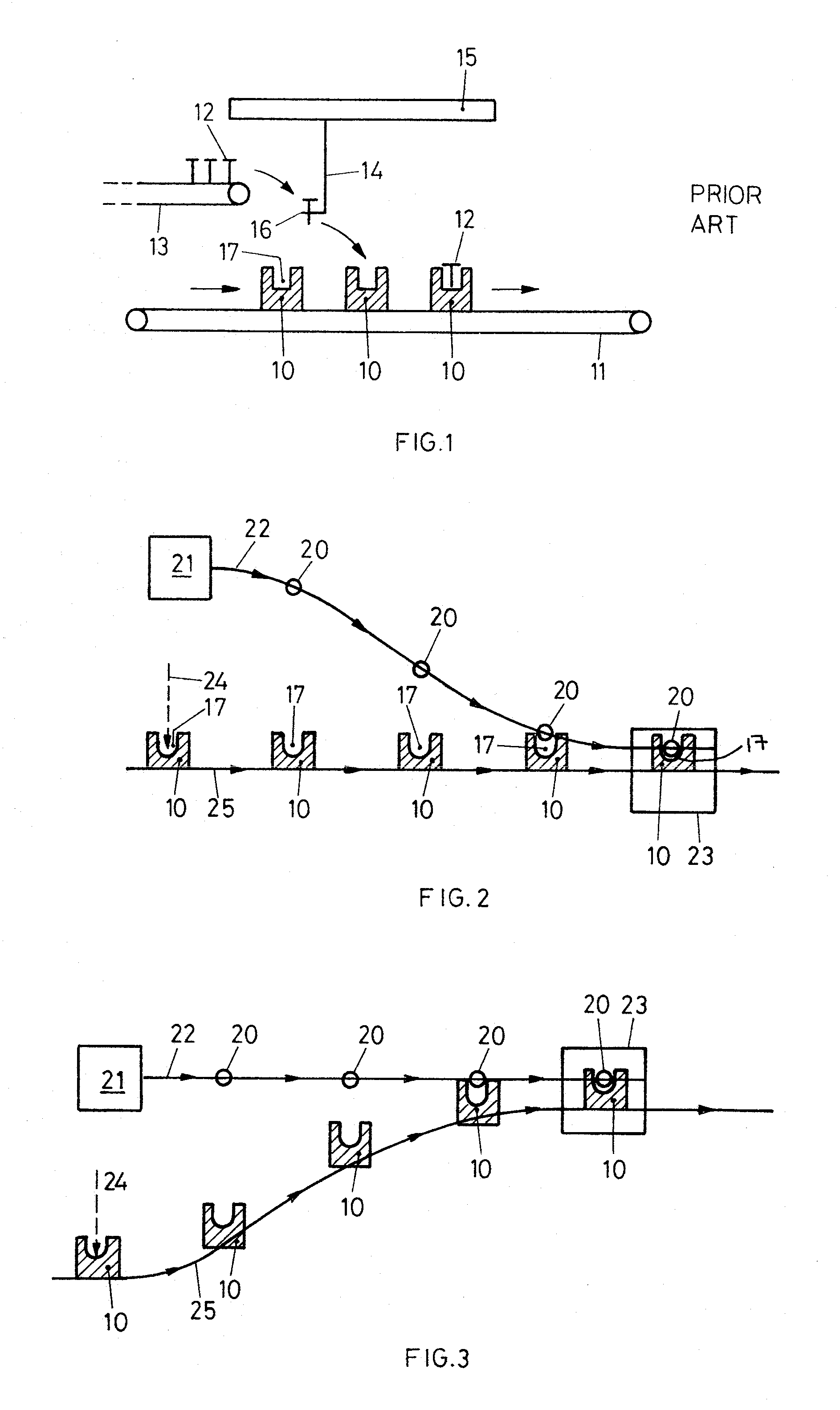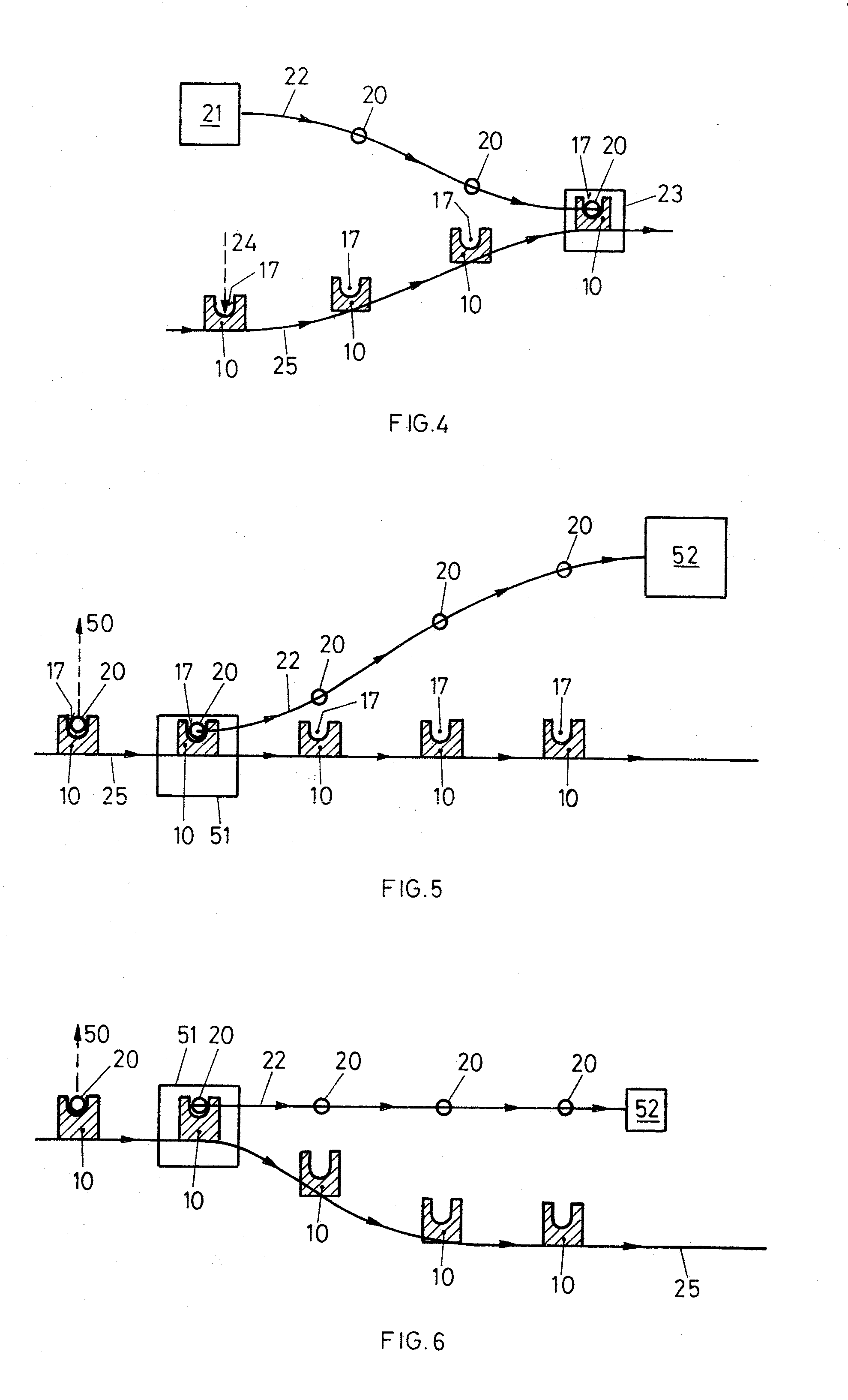High-speed loading/unloading of objects
a high-speed, object technology, applied in the direction of measuring/indication equipment, structural/machine measurement, instruments, etc., can solve the problems of high maintenance costs, risk of damage to objects, and process still relatively slow
- Summary
- Abstract
- Description
- Claims
- Application Information
AI Technical Summary
Benefits of technology
Problems solved by technology
Method used
Image
Examples
Embodiment Construction
[0080]In the figures, like reference signs denote like parts.
[0081]FIG. 2 illustrates schematically and most generically a first method for loading objects into holders according to the invention.
[0082]Objects 20, which may have been collected sequentially and continuously from a collecting area 21, are transported continuously along an object path 22 extending to loading area 23. Aside from when collecting the first or depositing the last object 20 in any given batch of operation, a plurality of objects 20 will be present on object path 22. Meanwhile, holders 10, each having at least one cavity 17, each cavity being configured to receive an object 20 and having a loading-direction 24, in which an object 20 is insertable into the cavity 17, are conveyed continuously along holder path 25 to, through, and from loading area 23.
[0083]Object path 22 approaches the conveyed holders 10, and also approaches holder path 25, as the holder path 25 and object path 22 approach the loading area 2...
PUM
| Property | Measurement | Unit |
|---|---|---|
| Shape | aaaaa | aaaaa |
| Area | aaaaa | aaaaa |
| Distance | aaaaa | aaaaa |
Abstract
Description
Claims
Application Information
 Login to View More
Login to View More - R&D
- Intellectual Property
- Life Sciences
- Materials
- Tech Scout
- Unparalleled Data Quality
- Higher Quality Content
- 60% Fewer Hallucinations
Browse by: Latest US Patents, China's latest patents, Technical Efficacy Thesaurus, Application Domain, Technology Topic, Popular Technical Reports.
© 2025 PatSnap. All rights reserved.Legal|Privacy policy|Modern Slavery Act Transparency Statement|Sitemap|About US| Contact US: help@patsnap.com



